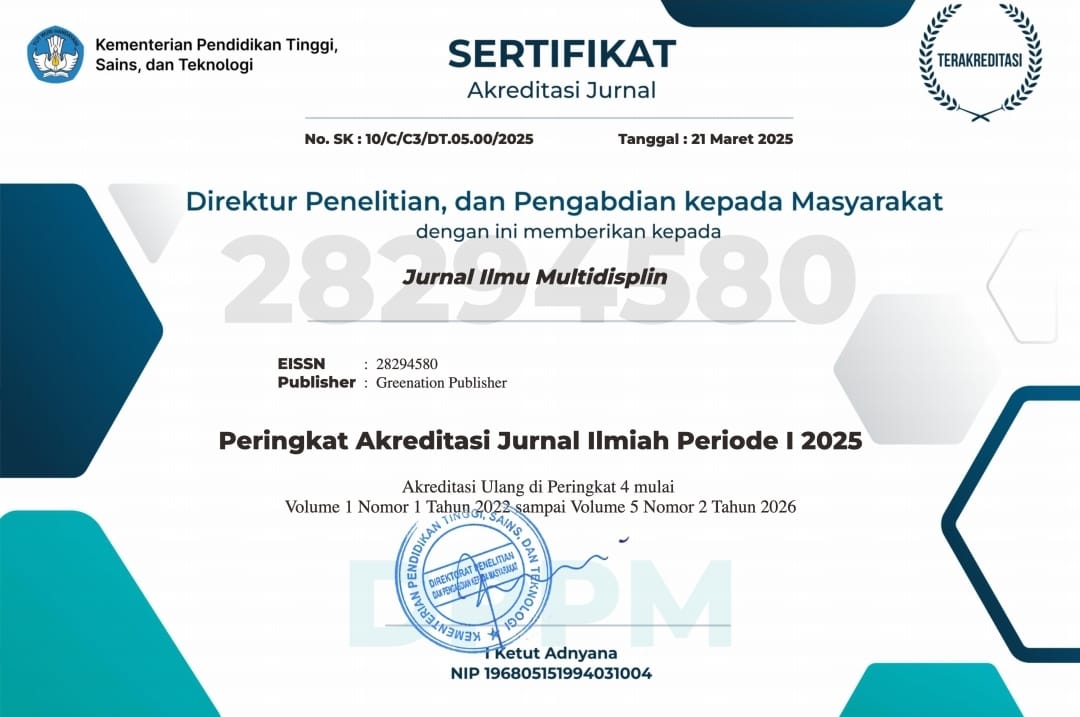Perumusan Kriteria Desain Interior Mall Adaptif bagi Generasi Z di Yogyakarta: Ruang Publik Inklusif di Era Digital
DOI:
https://doi.org/10.38035/jim.v4i4.1255Keywords:
Mall, Generasi Z, Desain InteriorAbstract
Transformasi mall sebagai ruang publik modern tidak lagi hanya ditentukan oleh keberhasilan fungsi komersialnya, melainkan juga oleh kemampuannya dalam mengakomodasi kebutuhan sosial, kultural, dan emosional pengunjung, khususnya Generasi Z. Penelitian ini bertujuan untuk merumuskan kriteria desain interior mall yang adaptif terhadap karakteristik perilaku dan kebutuhan spasial Generasi Z di Yogyakarta. Dengan metode Design Thinking dan pemetaan aktivitas pengguna, ruang-ruang dalam mall diklasifikasikan menjadi lima zona fungsional berdasarkan alur gerak, intensitas interaksi, dan kebutuhan afektif: zona orientasi, zona retail eksploratif, zona interaksi sosial, zona kebutuhan dasar, dan zona komunitas. Setiap zona dianalisis melalui parameter tata letak, pemilihan material, warna, pencahayaan, dan integrasi teknologi. Penelitian ini menyimpulkan bahwa desain interior mall yang responsif terhadap dinamika aktivitas dan karakter Generasi Z harus mengutamakan fleksibilitas spasial, konektivitas antar zona, serta pengalaman visual yang mendalam dan imersif. Hasil studi ini diharapkan menjadi referensi konseptual dan praktis bagi desainer interior maupun pengembang ruang publik urban kontemporer.
References
Ahn, A. (2024). Malls Have Rebounded Thanks to An Unlikely Source: Gen Z. Los Angeles Times. https://www.latimes.com/california/story/2024-01-19/gen-z-leads-the-charge-in-revitalizing-the-mall-experience
Astarini, S. D., & Utomo, C. (2023). Observation Scale of Space Value for Measuring Successful Shopping Malls, A Case Study in Indonesia. Journal of Asian Architecture and Building Engineering, 1–24. https://doi.org/10.1080/13467581.2023.2287208
Ayuni, R. F. (2019). The Online Shopping Habits and E-Loyalty of Gen Z as Natives in The Digital Era. Journal of Indonesian Economy and Business, 34(2), 168. https://doi.org/10.22146/jieb.39848
Cetaire, A.-E. (2022). Using Design Thinking for Developing Solutions Contributing to The Development of A Community Mall in Thailand: A Case Study of Rainforest Mall.
Efianingrum, A., Maryani, M., Sukardi, J. S., Hanum, F., & Dwiningrum, S. I. A. (2022). Kesadaran multikultural generasi Z dan implikasinya pada pendidikan. Humanika, 22(1), 1–20. https://doi.org/10.21831/hum.v22i1.49102
Nakata, C., & Hwang, J. (2020). Design Thinking for Innovation: Composition, Consequence, and Contingency. Journal of Business Research, 118, 117–128. https://doi.org/10.1016/j.jbusres.2020.06.038
Pande, M., & Bharathi, S. V. (2020). Theoretical Foundations of Design Thinking – A Constructivism Learning Approach to Design Thinking. Thinking Skills and Creativity, 36, 100637. https://doi.org/10.1016/j.tsc.2020.100637
Schallmo, D., Williams, C. A., & Lang, K. (2018). An Integrated Design Thinking Approach – Literature Review, Basic Principles and Roadmap for Design Thinking.
Vilnai Yavetz, I., Gilboa, S., & Mitchell, V. (2021). Experiencing Atmospherics: The Moderating Effect of Mall Experiences on The Impact of Individual Store Atmospherics on Spending Behavior and Mall Loyalty. Journal of Retailing and Consumer Services, 63, 102704. https://doi.org/10.1016/j.jretconser.2021.102704
Downloads
Published
How to Cite
Issue
Section
License
Copyright (c) 2025 Amanda Clarissa, Firman Hawari

This work is licensed under a Creative Commons Attribution 4.0 International License.
You are free to:
- Share— copy and redistribute the material in any medium or format
- Adapt— remix, transform, and build upon the material for any purpose, even commercially.
The licensor cannot revoke these freedoms as long as you follow the license terms.
Under the following terms:
- Attribution— You must give appropriate credit, provide a link to the license, and indicate if changes were made. You may do so in any reasonable manner, but not in any way that suggests the licensor endorses you or your use.
- No additional restrictions— You may not apply legal terms or technological measures that legally restrict others from doing anything the license permits.
Notices:
- You do not have to comply with the license for elements of the material in the public domain or where your use is permitted by an applicable exception or limitation.
- No warranties are given. The license may not give you all of the permissions necessary for your intended use. For example, other rights such as publicity, privacy, or moral rightsmay limit how you use the material.



























